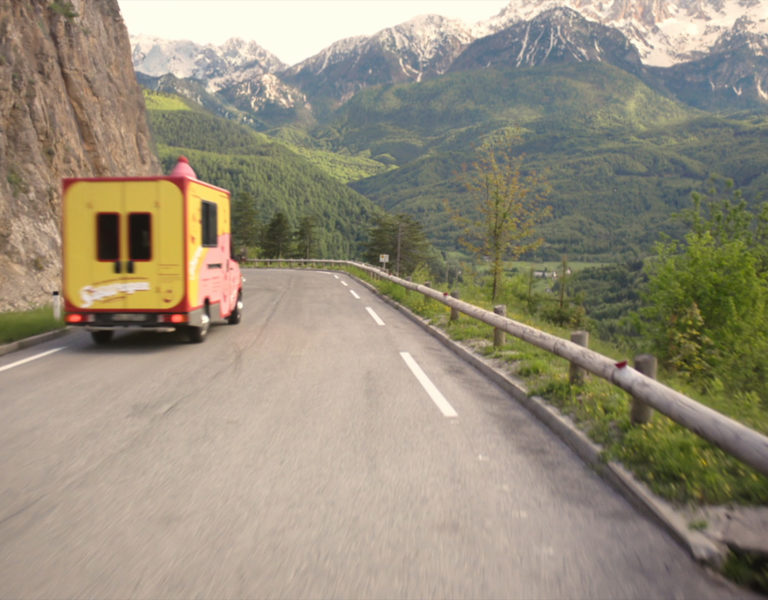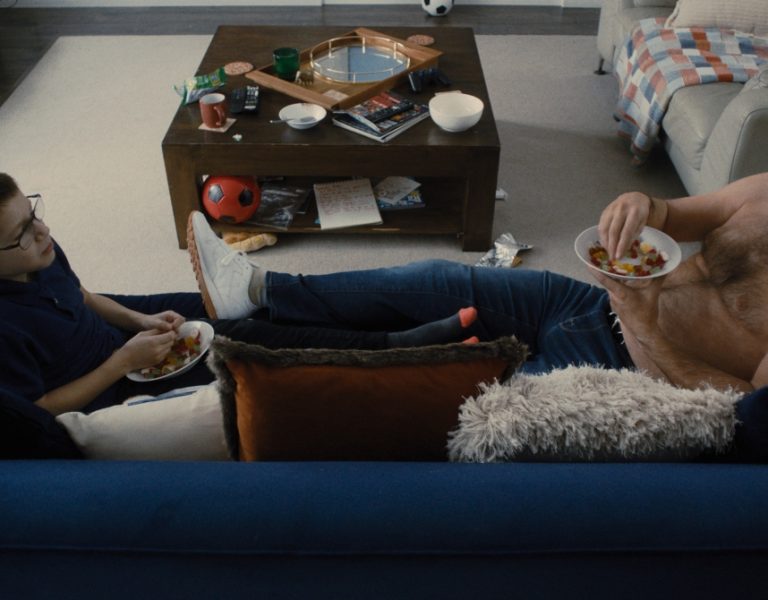THE RIOT ACT
Rebirth is a compelling film that draws inspiration from the 2011 London riots. Director of photography, Charlie Knight, elucidates on his approach, describing the film as a modern rendition captured in an almost static, photographic style inspired by the director’s admiration for Michelangelo.
The 2011 London riots, ignited by the death of Mark Duggan, a 29-year-old black man shot by police in Tottenham, were a watershed moment in London’s modern history. However, it wasn’t until co-director Joel Claude travelled to Rome in 2020 for another project that the idea for a film related to that summer emerged. “During COVID, flights to Rome were about £15, so I went with a couple of crew members,” he recalls. “I’ve always been fascinated by Greek mythology and history, so while admiring Michelangelo’s beautiful Sistine Chapel paintings, our AD, Zac asked what our personal renaissance period was. I realised that the Renaissance isn’t just an aesthetic—it’s a moment in time. For us, it was the 2011 riots.”
The question then was how to use the inspiration of beautiful Renaissance art to tell a story with stills but in motion pictures. Back in London, Claude began creating storyboards and mood boards so he could visualise the film, and the images were inspired by the likes of director Zach Snyder (Justice League, Watchmen).
After a few rejections, Claude remembered how a mentor, Ewen Spencer, the British photographer and filmmaker, showed him how he lights a set with a portable flash. “I saw how shadows, compositions and lighting will allow you to get this sort of real life painting,” he says.

Knight time
Claude, who directed alongside writer Joel Maisanda, was familiar with the work of DP Charlie Knight and after a chance meeting in a Shoreditch bar, the latter was brought on board and Rebirth was born. The film weaves together two intertwining perspectives to explore the collective struggles and personal experiences of a diverse cast of characters, showcasing the enduring spirit of hope and creativity in the face of adversity.
However, a dearth of resources and zero-funding meant the film, produced by UMD, was very much a passion project. “We were relying on favours from kit houses and wondering how long favours would last,” Knight adds.
Claude envisioned the film being shot in slow motion, with each scene resembling an individual photograph. He wanted to create a 2D/3D pop up to see how he could make paintings move – an idea he derived from two BBC series. One inspiration came from the cinemagraphs used in the EastEnders trailer for Who Killed Lucy Beale? The other came from an episode of Doctor Who. “There was a painting in the National Gallery which was a landscape piece called Gallifrey falls no more and this circular pan happens around the Doctor and Clara as they stood still but the image inside was moving. The cast have dark skin and wear brilliant white, so there’s a contrast and it was important to see the ripple in their fabrics, like the details of an image created by the comic book artist, Alex Ross.”
Not only was the film to be shot in slow motion, it was a case of “the slower the better was the consensus” on this shoot, according to Knight. “Yet, with limited resources we couldn’t venture out to use any tech like the Phantom cameras so we opted for the Red Raptor which has a slow motion setting of 480 fps,” he continues. “However, this crops your sensor to 2K which coincidentally is almost exactly the size of a s 16 film plain. So, we used ARRI Ultra16 primes as our lens set for this mixing the sharp glass with a slightly grittier 2K cropped image.”

He says the biggest challenge the team faced during the shoot was concerning the extreme high speed. “Shooting 480 fps means that every focus mark needs to be perfect, every camera moves need to be 10x faster, any practical lights will likely flicker etc,” he says. “We encountered a few problems around this, but most of these were spoken about in detail ahead of the shoot and so freed our time on set to be more creative rather than having to problem-solve in the moment.”
When it came to lighting the film, the team used stylised light where possible, mostly using HMI with HS ballasts and LED, sky panels and Litegear Litemats. “There are moments in the film where we wanted to utilise the natural light or practical lights to enhance the film, such as when they are in the tunnel we use the practicals of the fluorescent tubes lining the edge of the underpass and the flicker helped to enhance the scenes suspense and almost emulate the flashing light of a police siren,” Knight adds.
Producer Amos Mukombero says if there are “a few things” the team would love for audiences to gain from Rebirth, “it is to love thy neighbour as without our community we would not have stood a chance in the fulfilment of our vision and that self-belief is vital”.
Joel Claude was the winner of the scripted short category at the CVP and Canon 2024 Stories in Motion Young Filmmakers Awards for Rebirth.














